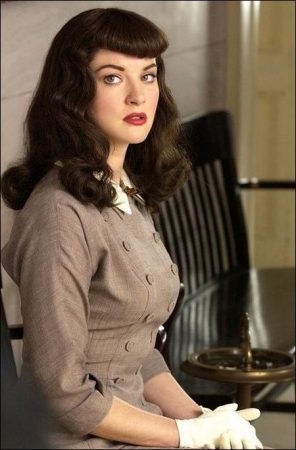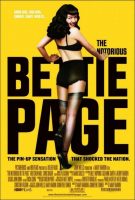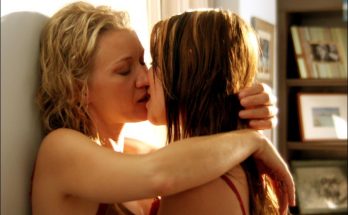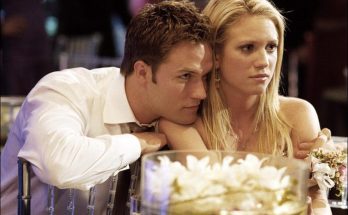Tagline: The pin up sensation that shocked the nation.
The Notorious Bettie Page movie storyline. Bettie Page was the ultimate girl-next door, and one of the most popular Playboy centerfolds. Page challenged the conservative 1950s, posing as a fierce dominatrix and earning both a cult underground following and Senate Committee investigation on juvenile delinquency, essentially a witch-hunt orchestrated by a senator from her home state of Tennessee bent on exploiting her as a stepping stone to the White House. At the height of her popularity, Bettie disappeared. But in 1979 and 1982, Page (a diagnosed schizophrenic) tried to stab several people to death and was institutionalized.
From Mary Harron (I Shot Andy Warhol, American Psycho) comes The Notorious Bettie Page, a provocative exploration of sexuality, religion and pop culture as she takes us into the 1950s and the fascinating world of famous pin-up girl, Bettie Page.
In an incandescent performance, Gretchen Mol stars as Bettie Page, who grew up in a conservative religious family in Tennessee and became a photo model sensation in 1950s New York. Bettie’s legendary fetish poses made her the target of a Senate investigation into pornography, and transformed her into an erotic icon who continues to enthrall fans to this day.
As it depicts Bettie’s often accidental journey to celebrity, The Notorious Bettie Page captures a vanished but not entirely unfamiliar America, where sex is a secret obsession that can incite furor at the highest levels of government. In a stylistic tour-de-force, Harron recreates the look and feel of the films of Bettie’s 1950s heyday, variously evoking the era’s gritty black & white noirs, lush Technicolor melodramas, even its Super 8 home movies.
We step into the past to follow the life and career of Bettie Page, a quiet, good-natured Southern beauty who found her calling in front of the camera and radiated vitality and joy in every costume, every milieu. Though her fetish tableaux may now look more quaint than shocking, Bettie Page remains a wonder to behold.
It is 1955, and Tennessee Senator Estes Kefauver (David Strathairn), the Chairman of the Senate Subcommittee to Investigate Juvenile Delinquency has opened hearings to investigate the impact of pornographic material on the nation’s youth. Police officers have raided New York City’s shady Times Square bookstores, where shelves are lined with men’s magazines like Escapade and Wink, and specialty photos and booklets like “Bettie Page in Bondage” are kept behind the counter for customers with specific requests. A Catholic priest testifies before Senate committee that such materials are a greater menace to America than Communism.
In the hallway outside the hearing room, a lovely raven-haired woman (Gretchen Mol) quietly waits to be called before the committee. She wears a demure suit and proper white gloves; in a warm Southern accent, she gracefully deflects the subtle overtures of an intrigued young police officer, politely assuring him that she will be fine on her own.
She is the model from “Bettie Page in Bondage.” And while her image in lace-up leather boots tells one story, the latest snapshot of Bettie and her sister Goldie, taken after church in Nashville, tells another. And both are stories of Bettie Page.
She grows up during the Depression in a poor family in Nashville. As a young girl, Bettie goes to church every Sunday with her mother and siblings. While Bettie soaks up the warming words of the preacher (John Cullum), a young admirer tries to get her attention. Bettie doesn’t mind, but her conservative mother (Ann Dowd) keeps a tight rein on all her pretty daughters. As a teenager, Bettie is a bright and dedicated student, a member of the school debating team with her eyes on a college future.
But Bettie’s life has its troubles and setbacks. Her dreams of university don’t materialize, and her youthful marriage to a handsome local boy, Billy Neal (Norman Reedus) quickly goes sour. An innocent conversation on a Nashville street ends in ugliness and terror. Yet Bettie doesn’t dwell on her misfortunes, however dark they may be; she picks herself up and moves on – often literally. And so in 1949, she boards a bus that will take her to New York City and a fresh start. It is against the sophisticated, bustling background of 1950s Manhattan that Bettie Page will rise to fame and, eventually, notoriety.
A walk on the beach in Coney Island brings an encounter with Jerry Tibbs (Kevin Carroll), a police officer and part-time photographer. When Bettie good-naturedly agrees to pose for Jerry Tibbs, right there on the sand, she inadvertently launches a career. She learns how to highlight her figure for photographs, and at Jerry’s suggestion, re-styles her hair so curving bangs camouflage her high, broad forehead and so creating the famous Bettie Page hairstyle.
Soon Bettie is introduced to the world of camera clubs, becoming a favorite of the shutterbugs who take sexy photographs of women for men’s magazines and private collectors. Whether wearing a bikini or saucily revealing lingerie, Bettie is completely at ease in front of the camera, cheerfully moving her body this way and that, her expression ever-changing but always welcoming. As her image becomes a common sight at newsstands, Bettie simultaneously pursues an acting career. Enrolling at a Greenwich Village acting studio, Betty reads Stanislavski and diligently applies herself to her exercises. She is something of an anomaly among her fellow students, who don’t quite know what to make of the religious young woman from Nashville.
Bettie’s modeling career eventually leads her to Movie Star News, a busy storefront run by Irving Klaw (Chris Bauer) and his half-sister Paula (Lili Taylor). The Klaws sell Hollywood head shots and movie stills; they also run their own photo business out of an office upstairs. Irving handles distribution and Paula takes photographs that are destined for private clients, men who like to look at women wearing very high-heeled boots and shoes, sometimes tied up or brandishing a whip.
It’s unfamiliar territory to Bettie, but she does not judge the prominent men who need an escape from the pressures of their lives. In the homey, well-fed environment of the Klaws’ studio, the accoutrements of bondage seem more goofy than threatening; the models are simply play-acting for a secret audience. Bettie becomes part of the Klaws’ unofficial family, which includes the talented, profane British photographer and illustrator John Willie (Jared Harris) and the worldly model Maxie (Cara Seymour). Bettie keeps her work with the Klaws separate from her cheesecake modeling, which grows to include a rewarding collaboration with photographer Bunny Yeager (Sarah Paulson) in Florida.
But Bettie’s work with the Klaws has put her on a collision course with the prevailing mores of the 1950s. The Senate hearings spell the beginning of the end of the Klaws’ photography operation. Soon, it will be time for Bettie Page to move on, relying as always on her faith.
The Notorious Bettie Page (2006)
Directed by: Mary Harron
Starring: Gretchen Mol, Lili Taylor, Jonathan M. Woodward, David Strathairn, Cara Seymour, Tara Subkoff, Kevin Carroll, Sarah Paulson, Austin Pendleton, Norman Reedus
Screenplay by: Mary Harron, Guinevere Turner
Production Design by: Gideon Ponte
Cinematography by: W. Mott Hupfel
Film Editing by; Tricia Cooke
Costume Design by: John Dunn
Set Decoration by: Alexandra Mazur
Art Direction by: Thomas Ambrose
Music by: Mark Suozzo
MPAA Rating: R for nudity, sexual content and some language.
Distributed by: Picturehouse
Release Date: April 14, 2006
Views: 64






